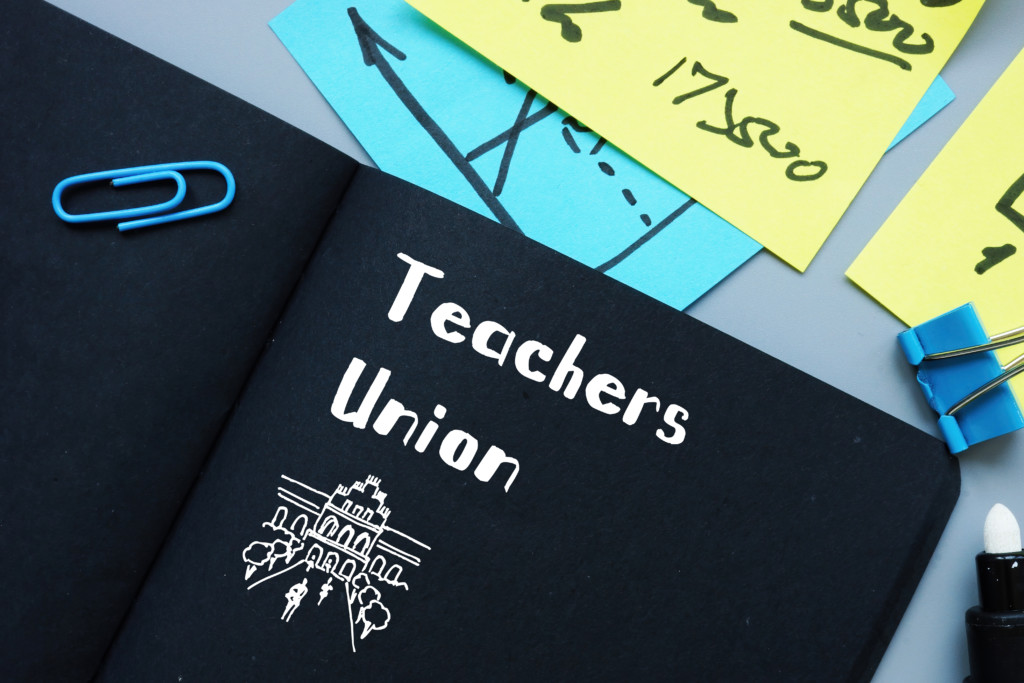 Last month, the Florida Education Association stepped up to the plate to take a swing at school choice.
Last month, the Florida Education Association stepped up to the plate to take a swing at school choice.
The state’s teacher union made three claims. First, that 90% of Florida’s K-12 students attend public schools; second, that this figure hasn’t changed in more than 20 years; and third, that the stagnant enrollment figure is proof vouchers (and school choice) are unpopular among parents.
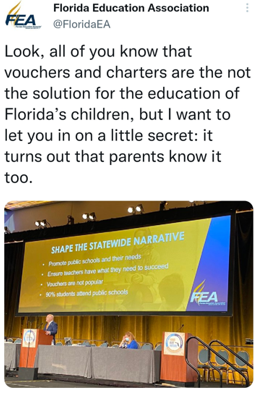 According to the U.S. Department of Education, Florida had 2,442,440 K-12 students enrolled in public schools in 2001. Counted in this total were 25,989 charter school students and 3,147 students attending university-run lab schools.
According to the U.S. Department of Education, Florida had 2,442,440 K-12 students enrolled in public schools in 2001. Counted in this total were 25,989 charter school students and 3,147 students attending university-run lab schools.
Florida private schools enrolled 303,093 students in 2001. There were around 41,128 home education students that same year.
That comes to 373,357 non-district students out of 2.78 million total K-12 students in the state, which means 86.6% of students attended district-run public schools in 2001.
If you go back further in time, say to 1995, your only options as a parent would have been a traditional district-run school, a district-run magnet school, private pay at a private school, or homeschooling. That year, about 89% of students would have been attending a district-run public school.
Claiming your option is the most popular with parents when parents have very little to choose from isn’t exactly the big endorsement the FEA makes it out to be.
That’s strike one.
So, has this “nearly 90%” enrollment statistic held true for more than two decades as more and more educational options become available?
According to the FLDOE’s “Education Choice Options by District” survey for 2019-20 (the latest data currently available) there were 2.9 million K-12 students in Florida, including 329,168 in charter schools, 28,011 students on the McKay Scholarship, 12,097 in Florida Virtual School, and 3,478 in university-run lab schools.
But this figure is missing private pay private school students, Florida Tax Credit Scholarship students, Hope Scholarship students, Family Empowerment Scholarship students, and homeschooled students.
When adding those missing 430,925 private and home education students for the 2019-20 school year, you get a grand total of 803,679 non-district students out of 3,334,672 K-12 students.
That means public school district students made up 75.9% of students in 2020 – not “nearly 90%.”
The number of non-district students more than doubled over the last two decades, and the public-school district’s share of the total K-12 student enrollment fell by more than 10 points.
That’s strike two.
Florida’s K-12 district schools are pretty good (Florida ranks No. 3 in the nation on K-12 achievement), and they undoubtedly are popular options among many parents. If the FEA truly believed its preferred schools were the best and most popular choice, it wouldn’t constantly be trying to stop charter schools from opening and school choice scholarships from expanding.
And that’s strike three. You’re out!
 Peter Zucker, the creator of the popular South Bronx School blog, has quite the disciplinary record.
Peter Zucker, the creator of the popular South Bronx School blog, has quite the disciplinary record.
At a 2015 arbitration hearing, Zucker was convicted of “neglect of duty; conduct unbecoming his position or conduct prejudicial to the good order, efficiency, or discipline of the service; insubordination; [and] substantial cause rendering him unfit to perform properly his obligations to the service.”
He was suspended without pay for four months.
Most people would find it reasonable to expect that no matter how remorseful Zucker may have felt, his disciplinary mishaps warranted permanent removal from the classroom. Yet, six years later, he is still employed by New York City’s Department of Education.
That’s because the United Federation of Teachers protected him.
UFT’s crusades on behalf of bad teachers have not been limited to Zucker. From 2005 to this past June, UFT pressure ensured the presence of “Rubber Rooms,” which housed more than 700 teachers with disciplinary concerns each year. Residents booked trips, played chess, and practiced ballet while being paid as if they were teaching classrooms full of children.
While New York City contains perhaps the most egregious examples, teacher unions around the country protect and defend bad teachers. A 2016 NPR/Ipsos survey found that more than 60% of teachers, accounting for union membership, agreed that union pressure made it more difficult to fire bad teachers.
Right-to-work laws and collective bargaining bans can help mitigate the power imbalance, but they still leave bad teachers answerable only to the bureaucracy that has long defended them. Only school choice holds teachers accountable to the people that matter most — families.
The proposition makes sense logically. Private and charter schools generally have smaller class-sizes and greater student-teacher interaction. If parents are not satisfied with their child’s instruction, they can ask for a different teacher, or simply take their business elsewhere. If one teacher causes so many problems that they affect the durability of the school, the school can simply fire them and move on.
But the proposition is also backed by data. Whereas it can take more than six years to fire a public school teacher, private and charter school teachers can often be fired extremely quickly. Private schools consistently have higher turnover rates than public schools.
Different salaries and certification requirements drive some of the turnover differential, but the added accountability matters, too.
Furthermore, children and parents aren’t the only ones who benefit from the removal of bad teachers; good teachers are left in a much better position. The tension and animosity between public school teachers and administrators can, at least to a certain extent, be attributed to union pressure.
But in a union-free environment where educational choice is a reality, administrators and good teachers can cultivate a trusting relationship. It leaves room for teachers to pick an employer with whom they share their values and offers opportunities to innovate new learning strategies and energize students.
The only people who believe in the constraining power of corrupt institutions are the ones in charge of those institutions. Families and administrators don’t want bad teachers instructing the next generation, and good teachers don’t want to be held back by those who don’t take their job seriously.
Those who truly want the best for American children (and teachers) should support school choice. It is the only policy change that can truly create happy and healthy classrooms that satisfy all stakeholders.
Otherwise, children will continue to be trapped in classrooms with instructors who don’t belong there, and parents will have little recourse. That simply isn’t fair to anyone.
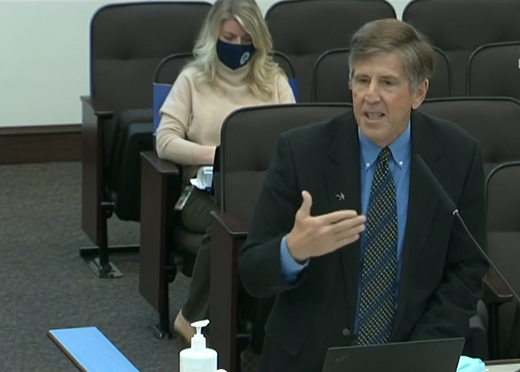 Editor’s note: This commentary from Step Up For Students president Doug Tuthill is a transcript of a podcast the reimaginED team recorded earlier this month. You can listen to the podcast here.
Editor’s note: This commentary from Step Up For Students president Doug Tuthill is a transcript of a podcast the reimaginED team recorded earlier this month. You can listen to the podcast here.
Q: Let’s start with your thesis. What main points do you think are important about teacher unions?
Tuthill: Unions have a symbiotic relationship with the industries within which they operate. A union’s business model is a function of how its industry is organized. The business model of a trade union representing carpenters and plumbers will reflect how the construction business is organized. A union representing home health care workers will reflect how the home health care industry is organized. And a union representing district schoolteachers will reflect how school districts are organized.
When the way an industry conducts business changes, the union’s business model must also change. Unions representing taxi drivers and retail mall workers are changing as ride-sharing services expand and much of retail shopping moves online.
Public education is in the early stages of a transition that is as impactful as how ride-sharing and online retail are transforming their respective industries. Public education is becoming more decentralized and public education services are increasingly being delivered outside of school districts.
One-size-fits-all education services are being replaced by customized services. Control of public education funds is transitioning from school districts to families. Teacher unions need to start transforming their business model to adjust to these industry-wide changes.
Q: What is your history with teacher unions and the labor movement?
Tuthill: I grew up in a blue-collar union household. Dad was a member of the firefighters’ union and Mom was a United Auto Workers member. Mom went on strike a few times and I was in middle school during the 1968 statewide teacher strike in Florida.
I became a union organizer in the spring of 1978 when I was elected president of the Graduate Student Union in Florida. We were affiliated with the American Federation of Teachers (AFT) and the AFL-CIO. We were also part of the United Faculty of Florida (UFF), which is the statewide faculty union representing college and university professors. I served on the UFF executive committee and was active in the AFT and the AFL-CIO.
In 1981, the AFL-CIO president asked me to serve on the organizing committee for the Solidarity Day march in Washington, D.C. That work lasted several months, involved hundreds of AFL-CIO unions, and about 500,000 marchers.
In 1984, I started teaching high school in St. Petersburg and became an active leader in our teachers’ union, the Pinellas Classroom Teachers Association (PCTA). I was PCTA vice president from 1988-91 and president from 1991-95. I also served on the board of directors of the statewide teachers’ union and did a lot of work nationally, and some work internationally, for the National Education Association (NEA), which is the country’s largest teachers union.
In 1995, I was a founding member of AFT/NEA sponsored Teacher Union Reform Network (TURN). I worked with TURN through 2001. From 2001 to 2003 I ran a union-sponsored organization that trained teachers and teacher union leaders.
Q: You toured the country in the early 1990s promoting a concept called new unionism. What was new unionism?
Tuthill: New unionism proposed a new mission for teacher unions. Instead of unions using their collective power to protect teachers from dysfunctional management systems, new unionisms advocated using this power to improve those systems.
The good people leading and working in school districts are well intentioned. But school districts still use a late-1800s industrial model of centralized, command and control management, which may be good for manufacturing Model T Fords but is an ineffective and inefficient way to manage public education. As a union organizer, I sold teachers protection from the many threats they faced working in these old industrial management systems.
Selling protection only works if people feel threatened, which is why teacher unions work to preserve these 19th century management systems while simultaneously selling teachers protection from those systems. Ironically, teachers are paying unions to perpetuate a system that threatens them, and for protection against these threats. The current teacher union business model is a protection racket. New unionism sought to change that.
Q: Why did teacher unions reject new unionism?
Tuthill: My friend Bob Chase was on the NEA Executive Committee. We spent several years discussing new unionism and Bob decided to make it a centerpiece of his 1996 campaign for NEA president. Bob got elected, but new unionism died early in his first term.
Protecting teachers from bad management is a very profitable business model. But more importantly, public education has been organized like an industrial assembly line since the 1800s. That model is deeply ingrained in local, state, and national policies, practices, and norms, and fiercely resistant to change.
Teacher unions will not improve until the larger public education ecosystem improves. Teacher unions are a subset of that ecosystem, and their business model derives from it.
Q: You assert that education choice is a necessary condition for improving public education and teacher unionism. Elaborate on this argument.
Tuthill: Public education is an overregulated, poorly performing market. The quality of our markets largely determines our standard of living. Imagine if the government owned all the housing in the United States and told people where they had to live.
Imagine if the government owned all the grocery stores and assigned people to grocery stores by ZIP code and assigned them the food they had to eat each day. In these scenarios the housing and food markets would function badly. There would be little innovation in housing or nutrition and people would rebel.
No one would tolerate the government dictating their housing and daily nutrition, and yet that’s how public education operates. We assign children to government-owned schools. We tell them what curriculum they will consume each day. And we now have about 150 years of evidence showing that doesn’t work for most students.
Despite all the evidence demonstrating that poorly functioning markets are bad, we continue insisting that public education be a poorly performing market. Giving families control over their child’s public education dollars is a necessary step toward creating a more effective and efficient public education market, which is why I support education choice. Education choice is a necessary condition for improving the public education market.
Education Savings Accounts (ESAs) contribute to a higher-performing public education market because they give families control over their child’s public education funds and provide them with the flexibility to purchase education services and products customized to each student’s needs.
As more families use ESAs, educators will have more opportunities to innovate and create more diverse education options they will own and manage. These changes will create new business opportunities for teacher unions.
Unions could help teachers create and manage their own education businesses, including micro-schools, virtual schools, home-school cooperatives, tutoring services, afterschool, weekend and summer programs, and traditional brick-and-mortar private and charter schools.
Teacher unions could help teachers access financing for physical infrastructure needs and provide administrative services such as bookkeeping, professional development, accounting/payroll, human resources, IT support, purchasing cooperatives, and employee leasing. (Some teachers may want to be employed by their union and contract with schools or other education providers on a part-time or full-time basis.)
Most teachers today must work in school districts because that’s where the jobs are. Freeing them to work for themselves or other teachers will allow them to have the professional status they have long been denied.
If lawyers can have lawyer offices, doctors can have doctor offices, and accountants can have accounting offices, why can’t teachers have similar professional opportunities? Why can’t teachers own public education businesses, and why can’t their union help them create and maintain these businesses?
For the foreseeable future, most teachers will continue working in district-owned schools. For these teachers, unions can continue offering their traditional protection, advocacy, and financial services, including legal protection, insurance, political advocacy, credit cards, and bargaining for salary, benefits, and working conditions.
Teacher unions do have opportunities to innovate within their current blue-collar union model. For example, professional sports unions integrate employee empowerment into their collective bargaining by negotiating minimum salaries and creating a well-regulated market within which individual employees may receive salaries well beyond the minimums. Many district teachers today would embrace the opportunity to be paid their true market value.
Q: Why won’t this version of new unionism fail like the last version?
Tuthill: In the early 1990s the public education ecosystem was not transforming like it is today. Currently, over half of Florida’s PreK-12 students are not attending their assigned district school. As more families assume greater control of their child’s public education dollars, teachers will increasingly leave school districts to take advantage of the opportunities created by this decentralization of public education spending. This expanding number of students being educated by teachers outside of school districts will eventually force teacher unions to begin selling services to these non-district employed teachers.
The pressures that led the NEA to become an industrial union provide a roadmap for how this next chapter of teacher unionism may unfold. The NEA was founded in 1857 and for over 100 years considered itself a professional association and not an industrial labor union. The AFT was founded in 1916 as a labor union for teachers. The first teacher union labor contract was ratified in 1962.
This contract launched the modern teacher union movement. Teachers in urban areas across the country began organizing themselves into labor unions and bargaining union contracts. AFT started to grow rapidly, and as NEA market share losses accelerated the pressure to turn the NEA into a labor union grew. By the mid-1970s the NEA had transitioned from a professional association to an industrial labor union.
As today’s teacher unions increasingly lose market share to organizations providing services to teachers working outside of school districts, they will start selling services to these non-district teachers in an effort to protect and recoup their market share. The NEA transition occurred over a period of about 20 years. I suspect a 20-year transition will also be needed this time. What I don’t know is when this transition will begin.
Q: Are you still a believer in teacher unions?
Tuthill: Teacher unions are comprised of good people working in bad systems. With the appropriate business model, teacher unions would be an asset in our efforts to create a more effective and efficient public education market.
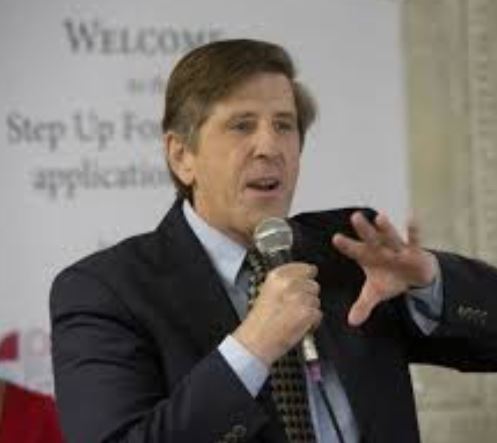
A lifelong educator and former teacher union president, Doug Tuthill has been president of Step Up For Students since August 2008.
On this episode, Tuthill, a former teacher union leader, presents his vision for how teacher unions can evolve in a world with robust education choice opportunity for families who want it.
Tuthill’s 45-year history with public education has convinced him that putting education spending in the hands of families provides a huge opportunity for educators who are keen to create new businesses and teach outside the current district system.
A key necessity, Tuthill maintains, will be for unions to evolve to serve those teachers and help create a healthier public education market.
“For some reason, we take this level of regulation and micromanagement and don’t rebel against it. But as you see now, families are saying, ‘This doesn't work.’ Education choice is a necessary condition to a create a functional (public education) market. One hundred fifty years of evidence showing a dysfunctional public education market does not create the equity we all aspire to.”
EPISODE DETAILS:
 Editor’s note: This commentary from redefinED guest blogger Valeria Gurr, who serves as director of external relations with the American Federation for Children, appeared Monday on washingtonexaminer.com.
Editor’s note: This commentary from redefinED guest blogger Valeria Gurr, who serves as director of external relations with the American Federation for Children, appeared Monday on washingtonexaminer.com.
Education has always mattered to me. As a first-generation immigrant of a single mother who didn't graduate from high school, I know firsthand how difficult it is to escape poverty without an education.
Before graduating with my master's degree, I decided that education was where I wanted to pursue a career, so I was excited when a teachers union hired me. I thought I had a real opportunity to help bring change to the education system.
This country does a disservice by not empowering educators to lead in their classrooms. I remember the countless conversations with my former colleagues about how to help teachers manage burnout, large classroom sizes, and professional development. We worked long and hard at finding ways to prevent teachers from leaving the profession within their first two years of employment. The system was awful.
It's challenging to make unhappy teachers happy with a system that fails them constantly. I left the job and found myself reflecting on why I left. Originally, I bought into the idea that I could bring change to the classroom and positively affect students and teachers, but the reality was that nothing ever changed.
Even after taxes brought in more revenue, teachers had to face salary freezes. The money never got to the classrooms. It wasn't entirely the union's fault — district mismanagement plays a big part. However, at the union, we fought for taxes in exchange for education improvements, which never became a reality, and we kept right on asking for more tax increases.
I became unmotivated and lost confidence in my purpose. Then, I found a new purpose and a passion for empowering families with additional high-quality educational options. Every day, I am motivated to fight for families who, like me, are searching for the American dream.
To continue reading, click here.
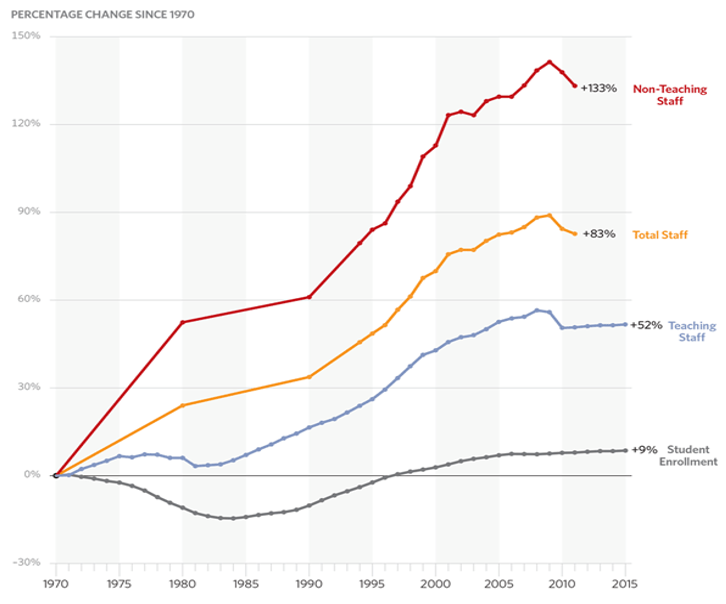
This chart, made available by The Heritage Foundation using data from the National Center for Educational Statistics, depicts a spike in school staffing, both teaching and non-teaching, of 83% over the pasts 45 years despite only a 9% increase in public school enrollment over the same period.
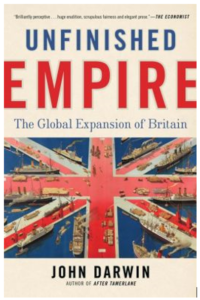 John Darwin’s book The Unfinished Empire describes the British Empire as “unfinished,” in large part because the Britons never agreed on the purpose of empire in the first place. The military, merchants and religious missionaries had wildly different concepts regarding what empire was about.
John Darwin’s book The Unfinished Empire describes the British Empire as “unfinished,” in large part because the Britons never agreed on the purpose of empire in the first place. The military, merchants and religious missionaries had wildly different concepts regarding what empire was about.
Over centuries, solemn promises not to add additional territories repeatedly were made and promptly broken. A few merchant adventurers got in over their heads in the face of internal conflicts and rival European competitors, and the next thing you know, somehow, they found themselves running a subcontinent. There wasn’t much agreement about why these things were done.
The same conceptual confusion surrounded the American occupation of Afghanistan. Were we there to bring bin Laden to justice? Alternately, were we there to ensure democracy and development? Flypaper strategy? Were we there to ensure human rights?
Situations with very high costs and unclear goals don’t often easily lend themselves to favorable outcomes. Just to put my cards on the table on this subject, I supported going into Afghanistan, wanted to leave after bin Laden had been dealt with, and I am dumbfounded that we left thousands of American citizens behind.
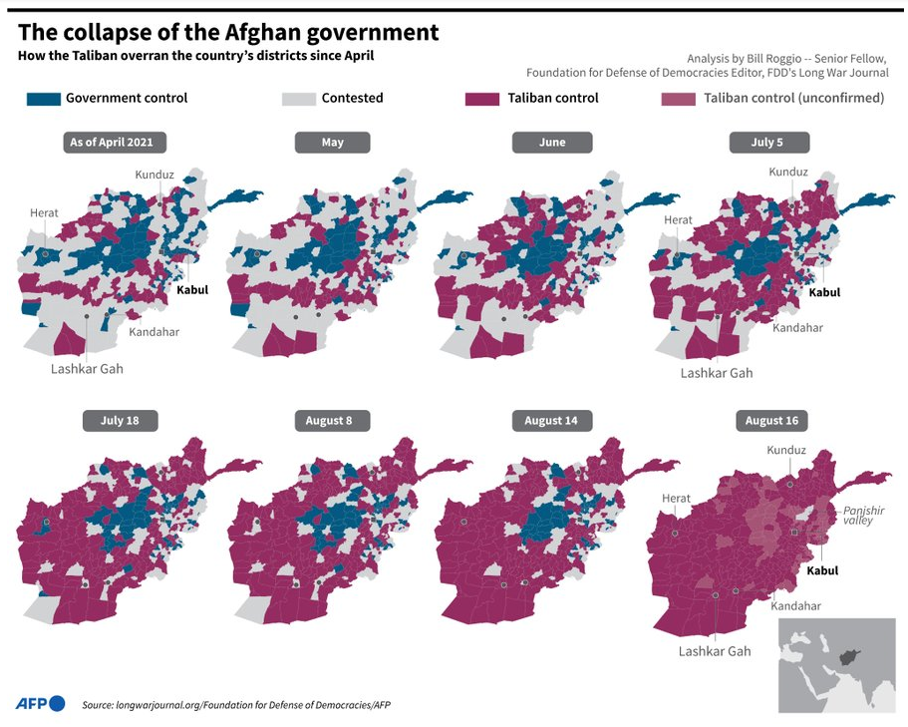
Glenn H. Reynolds, a professor of law at the University of Tennessee, notes in a column for the New York Post the enormous incompetence of having the troops “skedaddle” while leaving thousands of American citizens and military equipment behind and fantasizes about holding various officials accountable.
“None of this will transpire, of course” Reynolds says, explaining:
Our society is run by a technocratic-managerial class that never pays a price for failure. Democracy is a glossy finish over an unelected administrative state that isn’t really accountable to anyone and measures success or failure in terms of budgets, p.r. and power, not results.
The excuse for this is that the experts at the top are good at what they do, and ordinary Americans would make a hash of things if they had too much say. That excuse, however, has now been decisively buried in Afghanistan’s harsh soil.
If an unaccountable technocratic-managerial class running a costly and confused-over-goals hot mess sounds vaguely familiar, it might be because you follow American K-12 politics.
Americans generally share a notion about the purpose of public education: preparing students with the knowledge, skills and habits needed to flourish and exercise responsible citizenship. Yet far too little of this happens. Both illiteracy and deep civic ignorance are widespread.
Meanwhile, unionized employee interests have a wholly different concept of the purpose of public education: to function as a de-facto jobs program. This outcome has been remarkably more successful than the literacy and civic knowledge bit, as the Heritage Foundation graphically displayed – see the chart at the top of this column.
Emulating the strategic clarity of British imperialists or modern-day Pentagon bureau-bufoonocrats, the public-school system has tied itself in knots over a COVID intervention that is less effective than opening some windows and far less effective than getting a higher percentage of people vaccinated. A recent summary of research noted:
It’s also worth mentioning that ventilation tests show even modest ventilation rates provide about the same level of protection as the highest quality masks.
Kids aren’t wearing the highest quality masks. The ones they are wearing apparently only reduce aerosol spread by 10%, and by the way, kids have been swapping them on the bus because they are, you know, kids. It’s also worth mentioning that the “19” in “Covid-19” stands for “2019” and we are now approaching late 2021. It would be nice if our “experts” had a clue about the relative effectiveness of mitigation strategies by now.
Years ago, William F. Buckley stated he would rather be ruled by the first 500 names in the Boston phone book than the faculty of Harvard. It’s hard to imagine 500 random people designing a more incompetent military withdrawal than the one we actually witnessed.
A growing number of Americans have decided their children’s education would better be left up to self-reliance than K-12 “experts.” The best relationship you can have with a technocratic managerial elite is a finished one.
 John Stuart Mill warned us of the dangers of a state-provided education:
John Stuart Mill warned us of the dangers of a state-provided education:
Were the duty of enforcing universal education once admitted, there would be an end to the difficulties about what the State should teach, and how it should teach, which now convert the subject into a mere battle-field for sects and parties, causing the time and labour which should have been spent in educating, to be wasted in quarrelling about education.
Sound familiar?
We would have done well to heed Mill’s advice, but we chose not to listen. He continued:
All that has been said of the importance of individuality of character, and diversity in opinions and modes of conduct, involves, as of the same unspeakable importance, diversity of education. A general State education is a mere contrivance for moulding people to be exactly like one another: and as the mould in which it casts them is that which pleases the predominant power in the government, whether this be a monarch, a priesthood, an aristocracy, or the majority of the existing generation, in proportion as it is efficient and successful, it establishes a despotism over the mind, leading by natural tendency to one over the body.
Back in the late 19th and early 20th centuries, illiberal Protestants and nativists groups like the Know Nothings and the Ku Klux Klan decided they were going to use the public-school system to “mould” Catholic immigrants into “real Americans.” No thank you.
Alas, we have not escaped this urge in the modern day. Various societal factions want to use the education system to promote their social agenda.
This gets to be a problem when these factions attempt to force social agendas on unwilling people, and it appears to be the root of the current controversy over “critical race theory.” Antagonists on both sides of the controversy accuse each other of seeking to impose their preferences.
Sigh. Revisit the John Stuart Mill quotes above.
Angry parent groups have begun appearing at school board meetings. Of course, it’s their right to do so, but there are a few things about American school board democracy worth noting. First, it’s rigged. School board election turnout rates are low, often in the single digits, and the public has very limited information on candidates. As a result, the individual’s ability to shape school board elections is limited.
Unions, on the other hand, have an intense interest in school board elections. When they elect a majority, they get to effectively negotiate a contract with themselves; they make it next to impossible to fire teachers; and they’re able to get as many teachers hired as possible. School district democracy is deeply slanted in favor of union interests. While citizens have lives to live and limited bandwidth for obscure local races, those races are the lifeblood of unions. Economists describe this phenomenon as regulatory capture.
People have polarized and different beliefs about various topics. Drawing arbitrary lines and giving everyone a hard nudge into the same schools based on their ZIP code is a recipe for never-ending conflict, as Mill noted. Outsiders’ efforts to take and hold school boards have failed repeatedly, especially the “hold” part, which has to my knowledge failed every.single.time.
Sometimes, an outsider board majority gains office only to find long-term union association contracts in place which they cannot change. The outsider board only gained a (temporary) majority because the incumbent interests allowed them to do so before ousting them in a subsequent election.
And sometimes, an outsider board majority has no idea what to do with its majority. Sometimes, they get co-opted before they’re deposed.
State legislature efforts to ban critical race theory also are problematic. First, these efforts can ignore the diversity of preferences in the public. Second, enforcement mechanisms vary between nonexistent to very weak.
School boards work for the people who put them there, and teachers have elaborate job security guarantees. Thousands of teachers already have signed petitions saying they would ignore state critical race theory bans. You should believe them – they are perfectly capable of doing so.
I don’t mean to sound unsympathetic to parents. A kindergartner tried to persuade me to not to drive my car to save the lives of polar bears. His school thought it would be a wonderful idea to worry him needlessly with grossly simplified propaganda on a topic he could do nothing about. I found this developmentally inappropriate, and as a parent, was less than charmed by the experience.
But rather than embarking on what would have been a doomed expedition to seize the school board, I found a school more focused on education than social agendas. I may not have been the only parent who felt this way, as enrollment at the school declined by 15% prior to the pandemic.
Arizona schools still have what John Stuart Mill described as brainwashing urges, but they must choose between sloppily imposing those urges on people and having their school anywhere near the design capacity of their buildings. If you hang around for it, it is by choice, which is not a problem.
I’m open to recreating federal civil rights protections into state law. It may be possible to increase curricular transparency to better inform parents about what they are getting into without it becoming a bureaucratic nightmare, but color me skeptical. We have demonstrated quite the penchant for well-intentioned counterproductive bureaucratic nightmares over the last 20 years.
Parent reviews on external websites like Niche and GreatSchools are a more promising and less intrusive path to transparency in my opinion. At the end of the day, in a country that fundamentally disagrees on important topics, we need to allow people to choose among schools. To do otherwise is to invite cultural “forever” war.
School district democracy is rigged. You can’t win, but there are alternatives to fighting it.
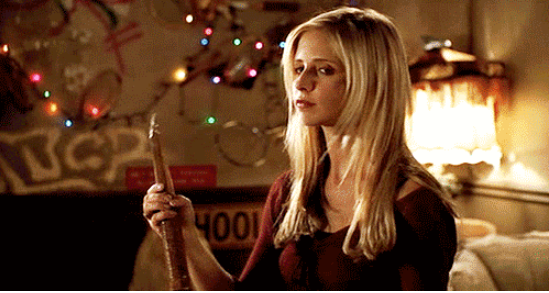 In an early episode of “Buffy the Vampire Slayer,” our protagonist wanted to go on a date rather than investigate a diabolical menace. “If the apocalypse comes, beep me,” she tells Giles, her overseer.
In an early episode of “Buffy the Vampire Slayer,” our protagonist wanted to go on a date rather than investigate a diabolical menace. “If the apocalypse comes, beep me,” she tells Giles, her overseer.
An apocalypse did indeed come in 2020, but fortunately, only in the initial meaning of the word.
The Greek word apocalypse means to uncover, reveal, lay bare, or to disclose. The year 2020 was apocalyptic not in the biblical or the later Buffy/zombie/robot sense, but rather in the original meaning. Unfortunately, much of what 2020 revealed has been unfavorable.
In the early months of the COVID-19 pandemic, I read an article that matter-of-factly described the United States as a country with “poor quality public services.” I stared long and hard at that sentence, trying to decide whether it was a fair assessment.
In the end, it was a conclusion which I found impossible to deny.
It’s difficult to say just when in 2020 this was laid bare. Was it when the agency that receives multiple billions of dollars to prepare for a pandemic released flawed COVID-19 tests?
Maybe it was later, when I listened in horror to the tale of how the Food and Drug Administration had hamstrung the use of salvia tests during the opening stanzas of the pandemic. These tests were more accurate, didn’t require either a swab (which were in short supply) or anyone tickling your outer brain through your nose.
Not to worry. The FDA kept you entirely safe from these tests during exactly the period when we needed them most. Unfortunately, COVID-19 spread like wildfire during the CDC-FDA testing fiasco.
On the other hand, the moment of revelation might have been the unique confusion displayed by American public health officials about the efficacy of masks in slowing the spread of a **cough** upper respiratory disease. Nothing like watching our technocratic grandees debate over something obvious to anyone with even the faintest lick of sense.
As you may recall, we were first advised that masks could spread the disease before we were told that they were indispensable to slowing the spread of the disease.
Let’s just pretend I spent a few additional paragraphs discussing that while American scientists created one of the vaccines (finally!) in use in two days, it took American public health authorities approximately 150 times as long to give us permission to use said vaccine.
By the way, this is “warp speed” for our glacial authorities. Millions of people around the world might have died and the global economy could have faced certain ruin if something went wrong with a vaccine after all.
Oh, wait. That’s actually what happened.
Not to be outdone by our public health officials, America’s education system has decided to give them a run for their money. While school systems around the world and within the United States not only have managed to safely reopen, some never closed in the first place. Now comes word that despite being prioritized for vaccines, some teacher unions are expressing skepticism about reopening nine months from now.
(Click here for a visual “huh?”)
What has been uncovered, revealed, laid bare and/or disclosed in the COVID-19 apocalypse? If you said, “the need for American self-reliance,” give yourself a gold star. The less reliant you are on dysfunctional authorities to take care of yourself, your family and your community, the better.
You can try to beep the Slayer, but you would be better served by sharpening a stake of your own.
 See! A disenchanted nation
See! A disenchanted nation
Spring like day from desolation;
To Truth its state is dedicate,
And Freedom leads it forth, her mate;
-- Percy Bysshe Shelley, “Prometheus Unbound”
Shelley got it right; truth and freedom are inseparable. And, when it comes to schooling, the two join in the long-established freedom of parents to decide the specific medium of truth for their own child.
And yet, it is the national reality that we have imposed the unchosen medium – the specific “public” school – upon the lower-income family; such parents have no voice in the matter. Billy’s school will be assigned to him by a completely impersonal system, one that lacks any plausible, or even intelligible, justification beside the welfare and power of the union chiefs who profit from it.
Will the empowerment of non-rich parents ever become a reality? Will these mothers and fathers one day be offered the dignity of making that fateful decision for their own child – that power and freedom that the rest of us so cherish?
Given his very specific and humbled submission to the teachers union by our most plausible next president, the federal government seems an unlikely champion of the poor for the near future. Yet, today, in a number of states, we watch politicians adjusting to signs of an awakening civic conscience; of course, it helps that the polls show a mounting preference for choice among all parents, the comfortable as well as the poor. The subsidized mother and father have become a spreading vision among our people.
When and if choice comes to be in a sustainable way, it will most likely do so in a variety of legal and economic forms from state to state. Vouchers that would subsidize and empower lower-income parents to exercise their legal right by paying tuition are merely the most simple and obvious remedy.
And, of course, we have already created the harbinger of parental empowerment in our well-functioning and very popular charters. Aside from their superior test scores, we can be confident that they work simply by watching the frantic (and too often successful) effort of union chiefs to minimize their numbers and/or to shrink the operating liberty of these precious quasi-public latecomers in our history.
Tuition vouchers for ordinary and poor families will be the simplest form for the subsidizing of choice. Imagine the real freedom for families that need financial help to decide for themselves if both vouchers and charters were to become available to them.
That will depend entirely upon the prudence and resilience of their current union overseers to transform themselves and, for the first time, rise to meet the competition in a free market.
In short, they would have to become worth choosing. Is that too much to ask?
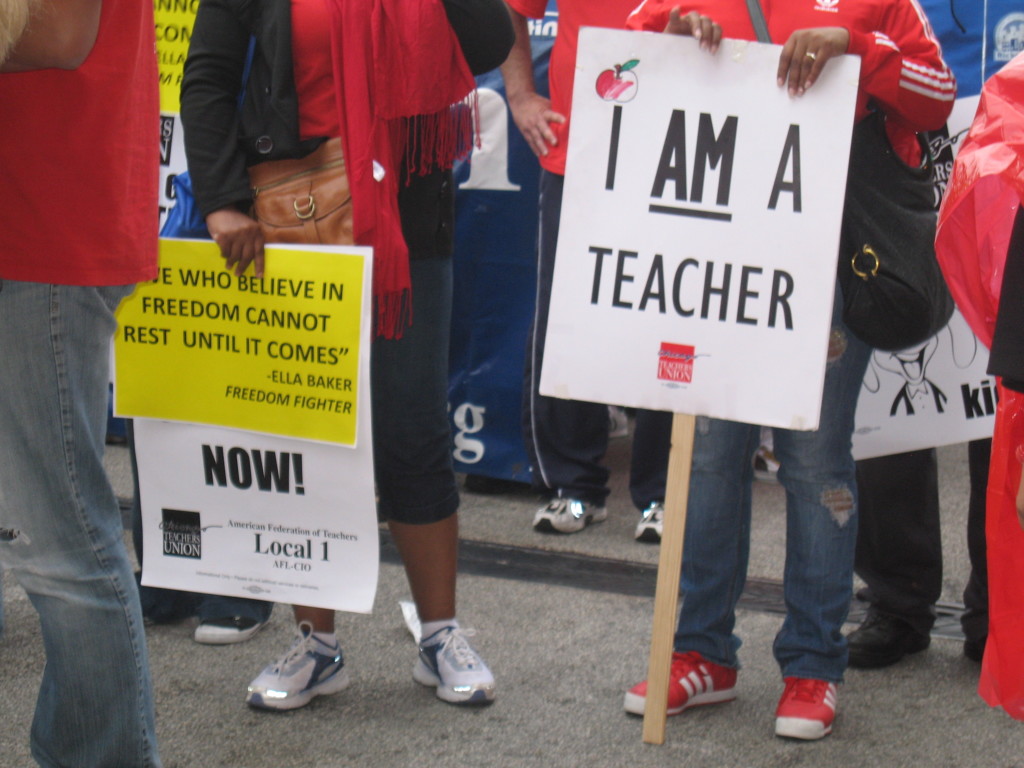 “A sharp distinction must always be made between the physical survival of particular schools and the survival of the educational quality in those schools.”
“A sharp distinction must always be made between the physical survival of particular schools and the survival of the educational quality in those schools.”
So writes American economist and social theorist Thomas Sowell in his latest book, Charter Schools and Their Enemies. If we measure analysis by its predictive abilities — anticipating problems that will recur when demonstrably successful ideas are ignored — Sowell’s book is nothing short of prophetic.
Consider: The American Federation of Teachers’ announced at the end of July that it would support a local chapter’s decision to go on strike “as a last resort” if schools opened with “unsafe school reopening plans.” These qualifying phrases seem to have been included for rhetorical purposes only.
Just days after the announcement, union members across the country, from Los Angeles to Baltimore, held protests, even though these and other large school districts are not opening in-person. (Florida’s constitution and state law prohibit teachers and other public employees from striking; however, the Florida Education Association recently won a lawsuit against the state over an order mandating the reopening of all public school campuses. The state has appealed.)
Last week, Detroit’s union (an affiliate of the AFT) voted in favor of a strike if policymakers changed the district’s current policy of offering classes online only.
Sowell predicted unions were capable of as much, writing, “Since teacher unions have millions of members and spend millions of dollars on political campaigns, they do not need logic or evidence to gain the support of elected officials who need campaign contributions to finance their re-election campaigns.”
Political action, not improved student learning, is behind union activity. The union chapters behind the “National Day of Resistance” on Aug. 3 that followed the AFT’s announcement posted an agenda that included calls for “police-free schools,” “canceling rents and mortgages,” and “providing direct cash assistance to those not able to work or who are unemployed,” along with a “massive infusion of federal money.”
Here, again, Sowell proved prescient. As he noted in his book, teacher unions embrace a slew of policies for which “there are usually no educational benefits to students.” Where does a child’s education fall on their list of priorities? As Sowell observes, “The plain and direct question that must be asked, again and again, is: ‘How, specifically, is this going to make the education of children better?’”
As Sowell notes, such interest groups are “enduring institutions with enduring personnel” that “maintain a given set of policies and practices over time.” This was evident last year, when teacher-union members in West Virginia refused to work until state lawmakers stopped considering a proposal to create private learning opportunities for children with special needs. Unions in Kentucky did the same. Strikes are nothing new, but unlike previous year’s strikes in Oklahoma, Arizona, West Virginia and elsewhere, these 2019 job actions were not centered on pay and working conditions. These strikes were efforts to drive policy by force.
Re-opening schools is a local concern. State agencies and the U.S. Centers for Disease Control can offer useful information and guidance, but in the end, the decision on how public schools will operate — be it with virtual, hybrid, or in-person instruction — should be left to members of a community, including parents, educators, and health officials. In making these decisions, the question foremost in their minds should be Sowell’s: How will this make the education of our children better?
Parents and educators are not waiting for union demands to be met — nor should they. As some school districts such as Chicago, Houston, Atlanta, and more announce they will offer only virtual instruction to start the new school year, parents are enrolling their children elsewhere (Detroit private schools are reporting waiting lists), choosing to homeschool or organizing neighborhood “pandemic pods” alongside teachers.
Families and policymakers alike should tire of teacher unions’ attempts to maintain power when parents choose an option outside of a child’s assigned school. Union demonstrations garner headlines and try to browbeat school officials to give them what they want. But recent activities, with their laundry list of assorted policy demands, reveal these special interest groups to be more interested in political opportunism than providing the best possible education for students.